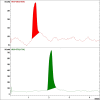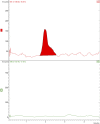Ritual drinks in the pre-Hispanic US Southwest and Mexican Northwest
- PMID: 26372965
- PMCID: PMC4577151
- DOI: 10.1073/pnas.1511799112
Ritual drinks in the pre-Hispanic US Southwest and Mexican Northwest
Abstract
Chemical analyses of organic residues in fragments of pottery from 18 sites in the US Southwest and Mexican Northwest reveal combinations of methylxanthines (caffeine, theobromine, and theophylline) indicative of stimulant drinks, probably concocted using either cacao or holly leaves and twigs. The results cover a time period from around A.D. 750-1400, and a spatial distribution from southern Colorado to northern Chihuahua. As with populations located throughout much of North and South America, groups in the US Southwest and Mexican Northwest likely consumed stimulant drinks in communal, ritual gatherings. The results have implications for economic and social relations among North American populations.
Keywords: US Southwest/Mexican Northwest; archaeology; cacao; holly; ritual drinks.
Conflict of interest statement
The authors declare no conflict of interest.
Figures








References
-
- Washburn DK, Washburn WN, Shipkova PA. The prehistoric drug trade: Widespread consumption of cacao in Ancestral Pueblo and Hohokam communities in the American Southwest. J Archaeol Sci. 2011;38(7):1634–1640.
-
- Hargrave LL. Mexican Macaws: Comparative Osteology and Survey of Remains from the Southwest. Univ of Arizona Press; Tucson, AZ: 1970.
-
- Creel D, McKusick C. Prehistoric macaws and parrots in the Mimbres area, New Mexico. Am Antiq. 1994;59(3):510–524.
Publication types
MeSH terms
Substances
LinkOut - more resources
Full Text Sources
Other Literature Sources
Research Materials

